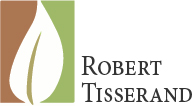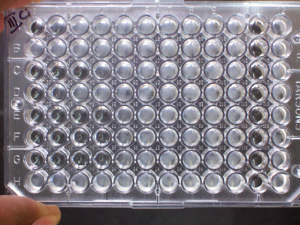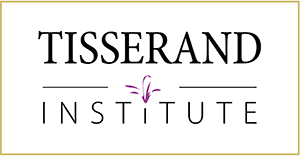The safety of essential oils in puberty, and hormonal effects in general, are important health concerns. In a 2007 research report by Colorado and North Carolina doctors and scientists, in vitro evidence seemed to support the notion that lavender oil and tea tree oil were responsible for breast growth in three young boys, suggesting an estrogenic action. Although this article has subsequently been cited more than 180 times in scientific literature and is still widely quoted on medical websites, lavender oil has been exonerated and there is still no evidence of any link between the in vitro findings and the three cases. Now evidence is emerging that suggests the lab test results may have been due to estrogenic compounds in the plastic laboratory ware used.
In vitro: In an artificial environment, such as a test tube
In vivo: Occurring or carried out in the living organism
In an April 2013 article the estrogenic claim is again made: “Other examples of naturally occurring endocrine disruptors include lavender oil, tea tree oil and fennel, all of which have been linked to breast development in prepubertal children presumably due to estrogenic effects.” (Note that ‘fennel’ refers to fennel tea, not the essential oil.) Christine Carson, Tony Larkman and myself wrote a letter contesting this assertion, and this is being published in the journal in March 2014. The important points of our letter are:
• Tea tree and lavender oils are now widely described as having estrogen-promoting properties.
• The research on which this assertion is based only demonstrated an in vitro effect.
• The plastic trays used in the in vitro testing contain estrogenic compounds such as phthalates.
• Essential oils are known to leach these compounds out of plastic.
• Therefore, the in vitro results could have been due to contamination.
• There is no other reason to believe that tea tree oil or lavender oil is estrogenic, and no estrogenic constituents of either oil has ever been identified.
• In vivo testing revealed no estrogenic action in lavender oil.
• No causal link was ever established between either of the essential oils and the three cases of prepubertal breast development cited by Henley et al.
In our letter, Christine proposes that the in vitro results may be due to the essential oils leaching estrogenic chemicals, such as phthalates, out of the plastic containers used in the laboratory testing. Exactly this type of contamination of MCF-7 tests (such as those used by Henley et al 2007) has been demonstrated in plastic labware from 7 different manufacturers (Ishikawa et al 2001). This idea finds further support in a recent publication, which reported that frankincense oil began to dissolve plastic laboratory trays at concentrations of 50, 25 and 12.5% (Al-Kharousi et al 2013).
The idea that essential oils can affect the structural integrity of some plastics, beginning to break down, or dissolve them, is not controversial. Neither is the idea that plastic laboratory vessels can sometimes contaminate sensitive biological assays. Research from the University of Alberta describes how plastic laboratory products may be a likely source of error in many assays (McDonald et al 2008). The failure to appreciate the solvent properties of essential oils, combined with the use of plastic laboratory vessels, may have led to estrogenic activity being mistakenly ascribed to lavender oil and tea tree oil.
Only one other supporting study has been published (Nielsen 2008). The same type of laboratory plastic trays were used as in the Henley et al study (96-well plates), and the estrogenic action of tea tree oil was similar in both.
It is always unwise to assume that an effect seen from in vitro testing will also apply to the living body. There are many possible reasons for this, but the idea that the laboratory equipment itself might be affecting results is unusual.
References
Al-Kharousi ZS, Nzeako B, Mothershaw AS 2013 Initial observation on the interaction of frankincense oil with selected plastics. International Journal of Food Properties doi: 10.1080/10942912.2012.698442
Carson CF, Tisserand R, Larkman T 2014 Lack of evidence that essential oils affect puberty. Reproductive Toxicology 44:50-51
Fisher MM, Eugster EA 2013 What is in our environment that affects puberty? Reproductive Toxicology doi: 10.1016/j.reprotox.2013.03.012
Ishikawa T, Takano K, Fujita T et al 2001 Estrogenic impurites in labware. Nature Biotechnology 19:812
McDonald GR, Hudson AL, Dunn SM et al 2008 Bioactive contaminants leach from disposable laboratory plasticware. Science 322:917
Henley DV, Lipson N, Korach KS et al 2007 Prepubertal gynecomastia linked to lavender and tea tree oils. New England Journal of Medicine 356:479-85
Nielsen JB, 2008 What you see may not always be what you get – bioavailability and extrapolation from in vitro tests. Toxicology In Vitro 22:1038–1042
Politano VT, McGinty D, Lewis EM et al 2013 Uterotrophic assay of percutaneous lavender oil in immature female rats. International Journal of Toxicology doi: 10.1177/1091581812472209




I wonder if this indicates a possible concern for packaging cosmetics in plastic containers.
Thank you for posting this! I’ve been having ongoing conversations with educated people who cannot see the holes in Henley’s research. This is one aspect I had not considered but makes perfect sense. I will be sharing these articles and appreciate all you are doing to educate professionals in the field Aromatherapy.
Does this research indicate that one should discontinue the use of homemade essential oil mouthwash, after resin composite dental restorations or, ” white fillings ” have been placed, so as to avoid the risk of degradation of the materials in the oral cavity? Would using homemade essential oil mouthwash, specifically, tea tree oil, cause the materials to simply break down, or even dislodge completely? Thank you.
Hi AR, no I don’t think so. There no evidence from the many thousands of “essential oil” mouthwash (such as Listerine) users that this is a problem. Although white fillings are made partly with plastic there are other materials present that mean they do not behave as plastic.